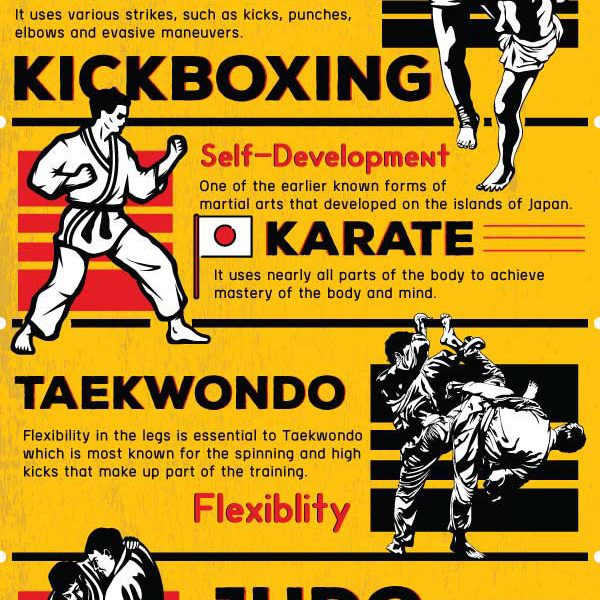Debunking The Different Martial Arts Designs: From Karate To Taekwondo
Debunking The Different Martial Arts Designs: From Karate To Taekwondo
Blog Article
Content Writer-Osman Husum
Are you tired of feeling bewildered by the large world of martial arts? With a lot of styles to select from, it can be very easy to get shed in a sea of strikes, kicks, and strange names. But anxiety not!
This discussion will certainly demystify the various martial arts styles, taking you on a journey from the powerful strikes of Karate to the dynamic kicks of Taekwondo. Get ready to discover the origins, methods, and viewpoints behind these old art forms.
So, tighten your belt and prepare to start an enlightening expedition into the fascinating world of martial arts.
Origins of Martial Arts Styles
The origins of fighting styles designs can be traced back to old civilizations and their demand for protection and battle strategies. Throughout background, various societies established their very own distinct techniques of fighting, each with its very own set of techniques and approaches.
In China, for example, martial arts designs such as Martial art and Tai Chi were created as a means of self-defense and enhancing physical and psychological wellness.
In Japan, the samurai warriors produced styles like Karate and Judo, concentrating on technique, accuracy, and proficiency of the body.
Similarly, in Korea, Taekwondo became a fighting style stressing high kicks, fast activities, and psychological stamina.
These very early worlds laid the structure for the diverse array of martial arts styles that exist today, each with its very own rich history and social significance.
Techniques and Educating Techniques
To master fighting styles styles, professionals must discover different methods and training methods.
Strategies are the certain activities and actions utilized in fight, such as strikes, kicks, tosses, and blocks. Various martial arts styles have their own unique collection of techniques that specialists need to master via extensive training.
Educating techniques differ depending on the design, yet they normally involve a combination of physical fitness, drills, sparring, and forms.
Physical conditioning is critical to develop toughness, versatility, and endurance. Drills aid professionals fine-tune their strategies and enhance their speed and accuracy.
Competing permits https://martial-arts-kids-arnis98209.bloggosite.com/40743933/utilize-your-inner-power-and-obtain-efficient-self-protection-methods-get-ready-to-develop-right-into-a-take-on-boxer to practice their strategies in a controlled, practical environment. Forms, additionally known as kata, are ironclad sequences of motions that help specialists establish muscular tissue memory and focus.
Ideologies and Principles
Discovering the philosophies and concepts of martial arts styles can provide you with a deeper understanding of your selected self-control. Each fighting style has its very own one-of-a-kind approach and collection of assisting principles that shape the means it's exercised.
For example, Karate highlights discipline, regard, and self-constraint. It educates specialists to concentrate their minds and bodies, allowing them to safeguard themselves while keeping a feeling of inner peace.
On the other hand, Taekwondo puts a strong emphasis on speed, agility, and flexibility. Its concepts are rooted in the tenets of politeness, integrity, perseverance, self-control, and unbeatable spirit.
https://www.paralympic.org/feature/sport-week-welcome-para-taekwondo that you've explored the origins, strategies, and viewpoints of numerous martial arts designs, you have a deeper understanding of these ancient disciplines.
Visualize a young karate pupil, experimenting undeviating resolution and emphasis, breaking through boards with an effective punch.
Their trip showcases the commitment and toughness needed to master a martial art, advising us that with technique and perseverance, anything is feasible.
